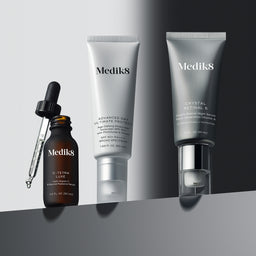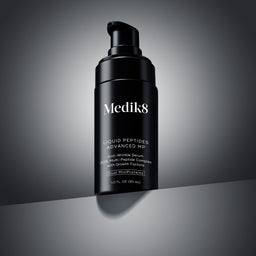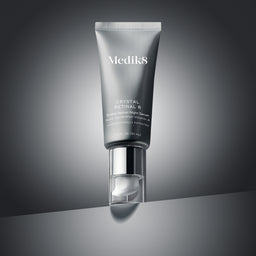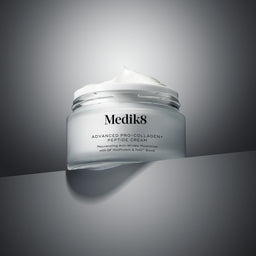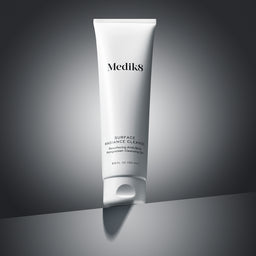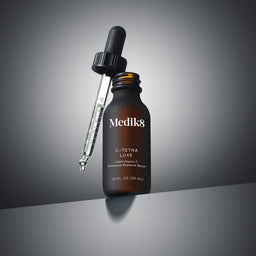What is a blemish?
A blemish can be any kind of spot, discoloration or mark on the skin, but in most circumstances ‘blemish’ refers to breakouts. A blemish is a clogged pore which can be raised, red and sore.
What is ‘blemish-prone skin’?
If you get frequent breakouts, then you likely have blemish-prone skin. Blemish-prone skin can refer to anyone who is susceptible to whiteheads, blackheads, pustules and more; from those who get the occasional pimple or blackhead, to those with high-grade acne.
Blemish-prone skin can be oily, however it can also be dry or dealing with other skin concerns such as hyperpigmentation or signs of ageing.
While traditionally associated with teenage skin, blemish-prone skin is common in all ages and unfortunately doesn’t always go away when you hit your 20s. You may find you experience blemish-prone skin all throughout your life, or it may be associated with life events such as menopause or high-stress periods.
How do blemishes form?
Simply put, a blemish is a clogged pore caused by four circumstances: excess sebum, the build-up of dead skin cells, inflammation and the accumulation of blemish-causing bacteria, (C. acnes).
Excess sebum
Excess sebum can occur when the sebaceous glands go into overdrive, producing more natural oils than the skin requires. This is quite often the result of hormonal changes, and is most common during puberty, before the peak of the menstrual cycle and in premenopausal women. The trouble starts when the excess sebum starts to clog pores rather than flowing freely onto the skin’s surface. This marks the birth of a pimple and it can happen weeks before you actually notice a blemish appearing.
Dead skin cells
Your skin renews itself every 30-40 days. But when excess sebum is trapped inside the pore, dead skin cells can get stuck in all that extra oil, creating an airtight blockage within the pore. Oxygen can no longer flow freely through the pore, which means that blemish-causing bacteria are able to thrive.
Blemish-causing bacteria (C. acnes)
In a normal, healthy complexion, C. acnes live happily on the skin without causing a problem. This is because oxygen from the air keeps them at relatively low levels. But in the midst of an air-tight, oil-filled pore, C. acnes begin to rapidly multiply. As they increase, they begin to feed on the excess sebum, converting it into irritating free fatty acids.
Inflammation
These irritating free acids are what triggers the body’s immune system and consequently the red, sore inflammation that we refer to as blemishes.
What causes blemishes?
There is no single cause of blemishes, and often a multitude of factors combined cause blemish-prone skin.
A key factor in formation of blemishes is hormonal changes, particularly during puberty, pregnancy, menopause or changes in hormonal contraceptives.
Medications and stress can both play a part in hormonal changes and trigger blemishes.
Environmental factors such as hot and humid conditions and sometimes changes in diet and an impaired skin barrier function can also cause blemishes to occur.
Types of blemishes
Dealing with a problematic skin can be challenging as there are many factors which need to be taken into consideration. To begin, identify the type of blemish you are experiencing.
There are two major types of blemishes; inflamed and non-inflamed.
Non-inflamed blemishes are usually referred to as comedones and can be open or closed, corresponding to either blackheads or whiteheads.
Open and closed comedones occur when sebum and dead skin cells combine to clog a pore, without causing any inflammation. Black heads contain sebum which is oxidized to a darker colour, and white heads are sealed which look paler on the skin.
Comedones tend to be easy to control with skincare, in particular with salicylic acid and vitamin A.
Inflamed blemishes can come in many forms. The most common type experienced are papules and pustules. Papules are small red bumps which may feel tender or sore. Pustules are very similar to papules, but have a white tip corresponding to a buildup of pus in the pore.
Papules and pustules in most cases will respond to a blemish-prone skincare regime, including a gentle cleanser, leave-on BHA and vitamin A.
The most severe form of inflamed blemishes are nodules and cysts.
Nodules are large, inflamed bumps which feel firm to the touch, while cysts are large pus-filled bumps. Cysts tend to be softer than nodules. Cysts and nodules can be painful and can leave scarring if not treated correctly.
In most cases, topical blemish treatments are unlikely to have a significant effect on nodules and cysts, and a doctor or dermatologist should be consulted.
Skincare for congested skin
Clarified Skin Regime:
AM
SPF 30 Sunscreen
PM
Glycolic Acid Activator (2-3 times a week)
Clarity Peptides (can also use AM)
To help minimize the signs of congested skin, we would recommend the following ingredients in your clear complexion skincare regime…
VITAMIN C
A powerful antioxidant, vitamin C can brighten and protect the skin, leaving it feeling calm.
Recommended product: C-Tetra, use after water-based serums in the morning
SUNSCREEN
Exposure to UV rays can cause the formation of free radicals, which can oxidize sebum to form blemishes. Sun exposure can also cause inflammation and redness which can exacerbate blemishes.
An SPF 30, broad spectrum sunscreen can help to minimize any sun-derived blemishes.
VITAMIN A (RETINALDEHYDE)
Vitamin A is able to smooth skin texture and normalize the exfoliation process. Retinaldehyde in particular is able to tackle blemish-causing bacteria to help block the pathway to congestion.
Recommended product: Crystal Retinal, layer on top of any other serums, in the evening
SALICYLIC ACID
A beta hydroxy acid (BHA), salicylic acid is oil soluble and is able to exfoliate blockages within pores to help minimise signs of congestion.
Recommended product: Surface Radiance Cleanse, use as a cleanser at the beginning of your morning and/or evening regime
NIACINAMIDE
Otherwise known as vitamin B3, niacinamide is a multi-functional ingredient in skincare. Ideal for soothing the skin, as well as helping to build the skin’s natural barrier and encouraging an even tone.
Recommended: Clarity Peptides, layered on top of water and oil based serums, or underneath Crystal Retinal, up to twice a day
A healthy skin barrier is key in helping to minimize future blemishes. Blemish-prone skin is sensitive skin; avoid attacking your skin with harsh products. Use gentle cleansers designed for blemish prone skin, and don’t be afraid to moisturize.
Top tips for preventing blemishes
In addition to the blemish-prone skin care regime mentioned above, we’d recommend to…
- Avoid touching your face
- Keep anything which does touch your face clean; pillowcases and phones are a big contributor
- Avoid picking or popping spots. If you have to pop a spot, only do it when it has a white head and use clean fingers with very gentle pressure. If the spot doesn’t pop by the second try, leave it be. You are likely to cause more inflammation which could lead to post-blemish dark marks.
- Changes to diet can help to mitigate blemishes in some people. You may wish to consult a dietician. Certain types of dairy and high sugar foods are often associated with higher chances of blemish-prone skin.
Dealing with post-blemish skin & post-inflammatory hyperpigmentation
A key concern that is associated with blemishes is the uneven tone and/or redness that can remain even after skin has recovered from a blemish. This can either be in the form of a dark mark or a red mark, depending on your skin, referred to as post-inflammatory hyperpigmentation (PIH) or post-inflammatory erythema (PIE).
PIH is caused by the skin producing too much melanin after being inflamed and leads to skin darkening in the area where the blemish was. PIH is more common in deeper skin types, in which melanin-making cells tend to be more active.
PIE is more common in lighter skin types, and is a result of damaged capillaries from the area of inflammation around a blemish.
The more inflammation, the more significant the PIH and PIE can be. They can take months or years to resolve on their own, and can worsen with sun exposure or with additional inflammation.
The key steps to preventing PIH & PIE is to prevent inflammation as much as possible; treat blemishes gently, do not squeeze them and always wear sunscreen.
PIH and PIE will often clear on their own after some time, but you can speed this up by using skincare products with vitamin A which helps to speed up exfoliation and bring fresh skin cells to the surface.
Acne-scarring is a different type of post-blemish concern, where the scar is usually raised or indented, and the same colour as your skin. These are usually permanent and need a professional skin resurfacing treatment to minimize their appearance on the skin.
← Older Post Newer Post →
